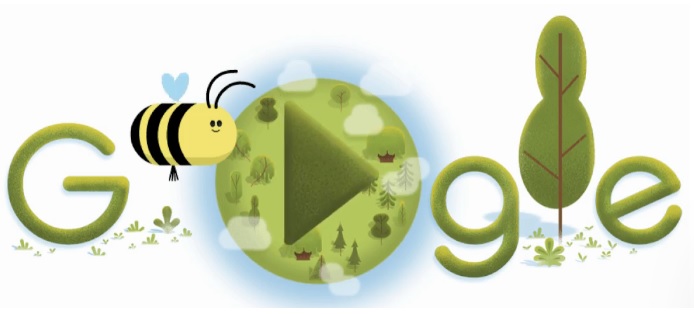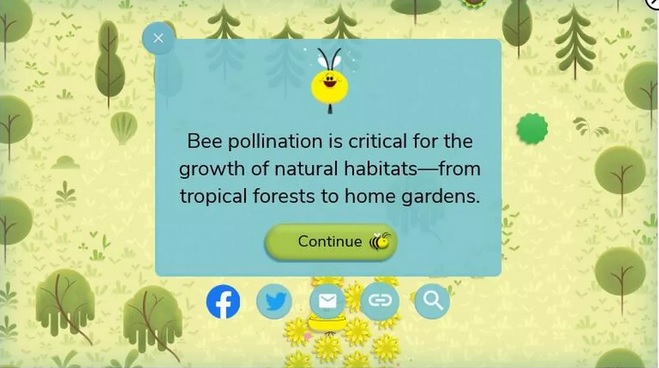Learn about bees while piloting a little pollinator from flower to flower.

Google gets down to the beesness of bees to celebrate the 50th Earth Day.
Google is marking Earth Day this year by creating a little buzz about a busy little bee that helps keep us alive. Literally.
The annual celebration, which is observed on Wednesday this year, was founded in 1970 and aims to raise awareness of environmental issues, with events around the globe promoting recycling, pollution reduction and care for the planet.
To mark this year's Earth Day, Google partnered with The Honeybee Conservancy, a nonprofit organization dedicated to protecting bees, to construct an interactive Doodle that features a bee going about its important business of pollinating flowers. You can use your mouse to guide the bee from flower to flower, getting pollination done and unlocking cool facts about bees and their importance to sustaining life on Earth.

One of the bee factoids you can expect to see while piloting your little pollinator from flower to flower.
Google frequently livens up its bare-bones search page with artwork that draws attention to notable people, events, holidays and anniversaries, often to remind us of lesser-known real-world heroes. While animals often appear in the doodles, it's less common that Google dedicates a doodle to one, as it did in 1997 for the pangolin.
Guillermo Fernandez founded The Honeybee Conservancy in 2009 to help save bees and to help underserved communities produce healthy food and build green spaces. Bees "pollinate 1 in 3 bites of food we eat," but a quarter of the 4,000 bee species native to North America are at risk of extinction, Fernandez wrote in a Google blog post highlighting bees' vital role in a healthy ecology.
"On a larger scale, the world's survival depends on theirs," wrote Fernandez, who serves as the organization's executive director.
Fernandez recounts growing up in a "food desert" racked with poverty and rampant health issues, such as obesity, diabetes and asthma. Most local food sources were supermarkets stocked with processed foods or fast food chain restaurants, and residents had little idea where their food came from or how to plan a balanced meal.
"The underfunded education system and limited green spaces amplified the problem: there were no pathways to learn," Fernandez writes. "My situation wasn't unique -- in the US alone, 13.5 million people live in food deserts, and 30 million suffer from food insecurity."
To help protect bee populations and improve "food literacy," The Honeybee Conservancy gives honeybee hives and native bee homes to organizations such as schools and gardens through its Sponsor-a-Hive program.
"By alleviating financial and educational barriers (keeping honeybee hives is a costly investment that requires training), we create access to resources that in turn produce food, improve the environment, and bring people together," he writes.
Fernandez says the Doodle captures the importance that a single bee plays in the world and underscores how small actions by individuals can add up to big results.
And you don't have to be a beekeeper to help make a difference. Fernandez suggests making an investment in local beekeepers by buying locally made honey and beeswax products. He also recommends donating time and money to local environmental groups.
Seventy percent of native bees live underground, so providing exposed, undisturbed soil or nesting boxes gives them a haven. You can also create a bee bath with clean water and stones that allow the bees to get a drink, or a garden with pollinator-friendly plants that provides a source of nutrition.
"There's no sweeter feeling than knowing you've helped save the bees," Fernandez wrote, providing a link to more information about bees and ways you can help. "At the very least, we hope you'll swarm over to today's Google Doodle to learn more about our helpful, winged friends!"